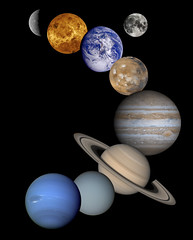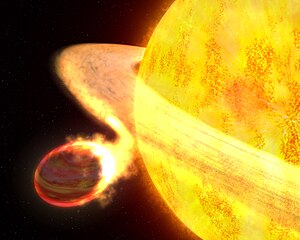Astronomers are saying that the diamonds cover the surface of this planet exactly like how sand, rocks and mountains cover the surface of our Earth.

A team of astronomers discovered recently a planet located outside our Solar System, slightly larger than Jupiter and orbits its star in about one day when Earth takes 365 days to orbit the Sun.
Astronomers are saying that the immense existence of diamonds and graphite on that planet is controlling its geographical nature and climate.
Obviously it is not easy to reach those diamonds, because the planet is almost 1200 light years far from Earth.
Also it is extremely hot where the temperature there is more than 2000 degrees centigrade.
This new planet, Wasp 12b, is the first to have more carbon than oxygen. It is a so-called gas giant, like Jupiter, and is mostly made from hydrogen gas.

But the planet's core could be composed of some form of diamond, graphite and other carbon compounds, possibly in liquid form.
But it seems there is hope as scientists are talking now about possibilities that life can exist on such planets out there can. They say this life if exists must be able to sustain low oxygen, low water and lots of methane and other hydrocarbons.
The atmosphere that is heavy with carbon could preserve heat and light, which provide energy for life.
Life in turn would adapt to survive on little oxygen and water.
Life also has to learn how to accept good lots of methane.
"It's exciting to even think about the possibility" of what carbon-rich planets could look like, says Adam Showman, a planetary scientist at the University of Arizona, who explains that although researchers knew that other solar systems should have a range of carbon-to-oxygen values, "this paper finally moves the discussion from pure speculation to plausible reality." He notes that exoplanets with carbon-based interiors could exhibit a range of surface features, atmospheric compositions and potential for oceans or life.
It wouldn't be the first diamond discovered in space. In 2004, researchers identified a former white dwarf star that has compressed and hardened into a giant diamond 25,000 miles across — or 10 billion trillion trillion carats. They named it Lucy, as in "Lucy In the Sky with Diamonds," the famous Beatles song.
So girls get ready.
One day you will reach there to get all these diamonds.
Sami Cherkaoui




No comments:
Post a Comment